Contents
- Back up your computer
- Install Python v.3
- Create a Directory
- Install Komodo Edit
- Start Komodo Edit
- Step 2 – ‘Hello World’ in Python
- Interacting with a Python shell
Back up your computer
It is always important to make sure you have regular and recent backups of your computer. This is just good advice for life, and is not limited to times when you are engaged in programming.
Install Python v.3
Go to the Python website, download the latest stable release of the Python programming language (Version 3.8 as of November 2019) and install it by following the instructions on the Python website.
Create a Directory
To stay organized, it’s best to have a dedicated directory (folder) on
your computer where you will keep your Python programs (e.g.,
programming-historian) and save it anywhere you like on your hard
drive.
Install Komodo Edit
Komodo Edit is a free and open source code editor, but you have many other text editing options if you want to use another programme. You can download a copy from the Komodo Edit website.
Start Komodo Edit
It should look something like this:
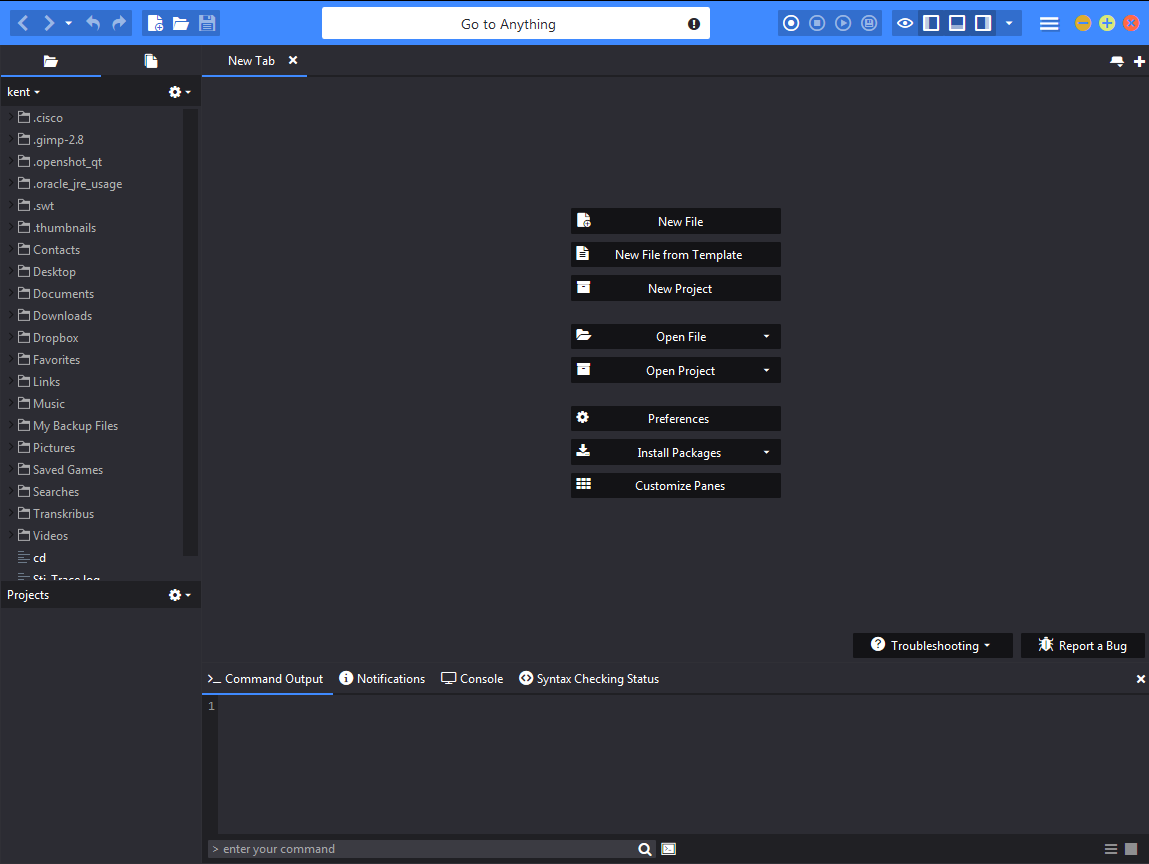
Komodo Edit on Windows
If you don’t see the Toolbox pane on the right hand side, choose
View -> Tabs -> Toolbox. It doesn’t matter if the Project pane is open
or not. Take some time to familiarize yourself with the layout of the
Komodo editor. The Help file is quite good.
Configure Komodo Edit
Now you need to set up the editor so that you can run Python programs.
Choose Edit -> Preferences -> Languages -> Python 3 and then select Browse. Now select C:\Users\YourUserName\AppData\Local\Programs\Python\Python38-32)
If it looks like this, click OK:
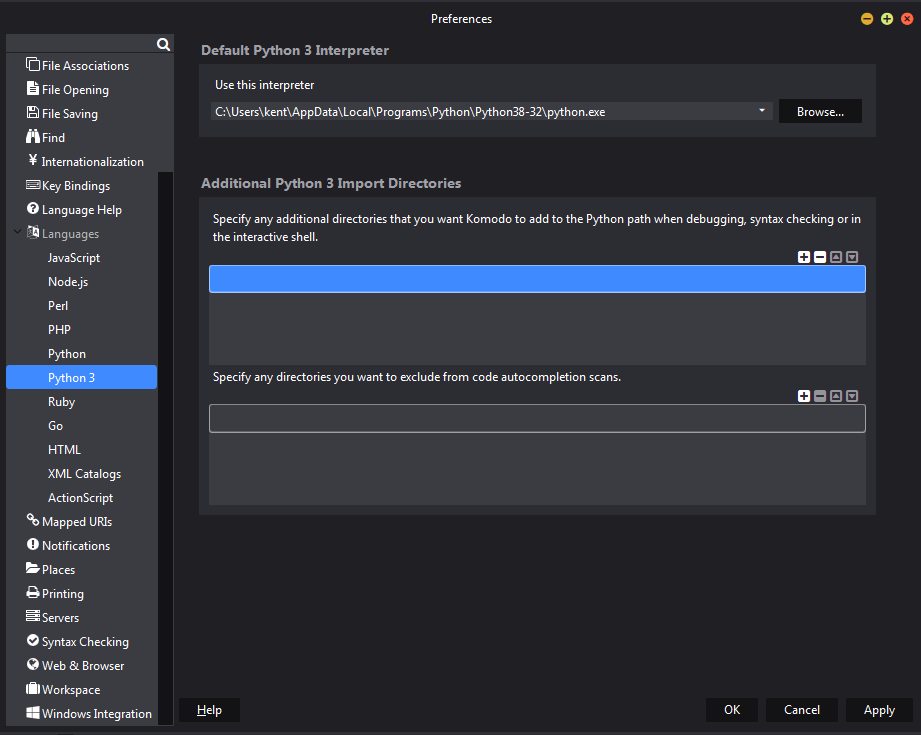
Set the Default Python Interpreter
Next, in the Preferences section select Internationalization. Select Python from the drop-down menu titled Language-specific Default Encoding and make sure that UTF-8 is selected as the default encoding method.
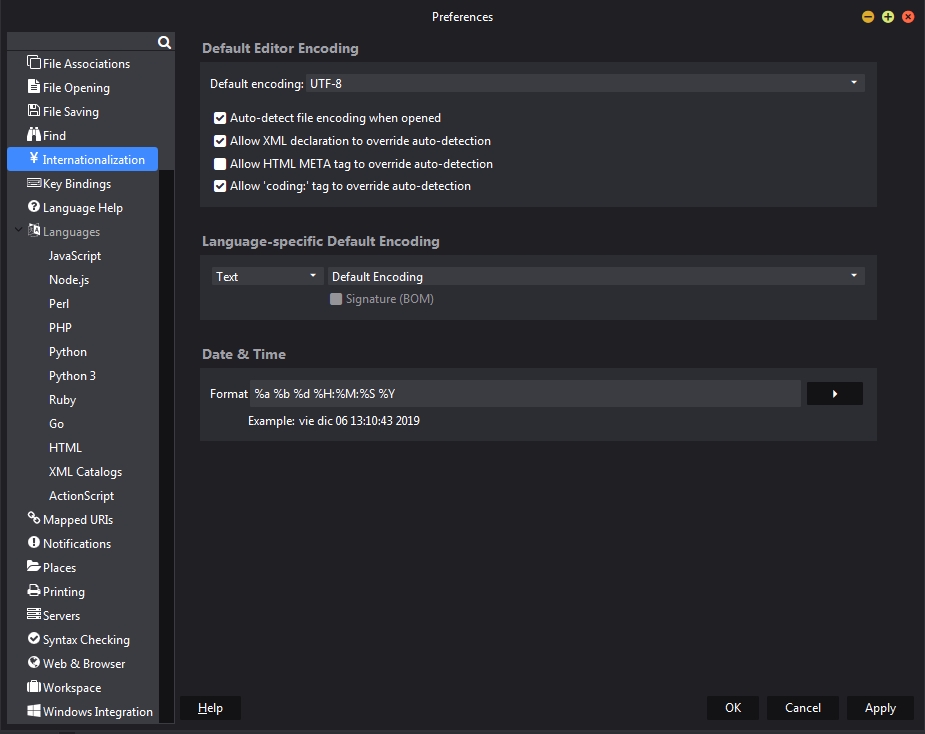
Set the Language to UTF-8
Next choose Toolbox->Add->New Command. This will open a new dialog
window. Rename your command to ‘Run Python’. Under ‘Command’, type:
%(python3) %f
If you forget this command, Python will hang mysteriously because it isn’t receiving a program as input.
Under ‘Start in’, enter:
%D
If it looks like this, click OK:

‘Run Python’ Command
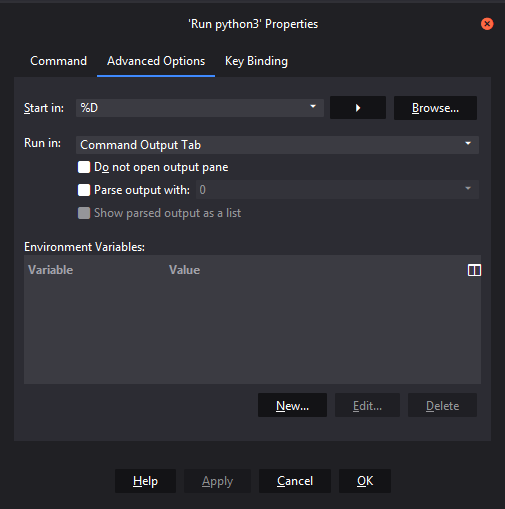
Configuring the command ‘Run Python Start’.
Your new command should appear in the Toolbox pane. You may need to restart your machine after completing this step before Python will work with Komodo Edit.
Step 2 – ‘Hello World’ in Python
It is traditional to begin programming in a new language by trying to create a program that says ‘hello world’ and terminates. We will show you how to do this in Python and HTML.
Python is a good programming language for beginners because it is very high-level. It is possible, in other words, to write short programs that accomplish a lot. The shorter the program, the more likely it is for the whole thing to fit on one screen, and the easier it is to keep track of all of it in your mind.
Python is an ‘interpreted’ programming language. This means that there is a special computer program (known as an interpreter) that knows how to follow instructions written in that language. One way to use the interpreter is to store all of your instructions in a file, and then run the interpreter on the file. A file that contains programming language instructions is known as a program. The interpreter will execute each of the instructions that you gave it in your program and then stop. Let’s try this.
In your text editor, create a new file, enter the following two-line
program and save it to your programming-historian directory as
hello-world.py
# hello-world.py
print('hello world')
Your chosen text editor should have a “Run” button that will allow you
to execute your program. If all went well, it should look something like
this (Example as seen in Komodo Edit. Click on the image to see a
full-size copy):
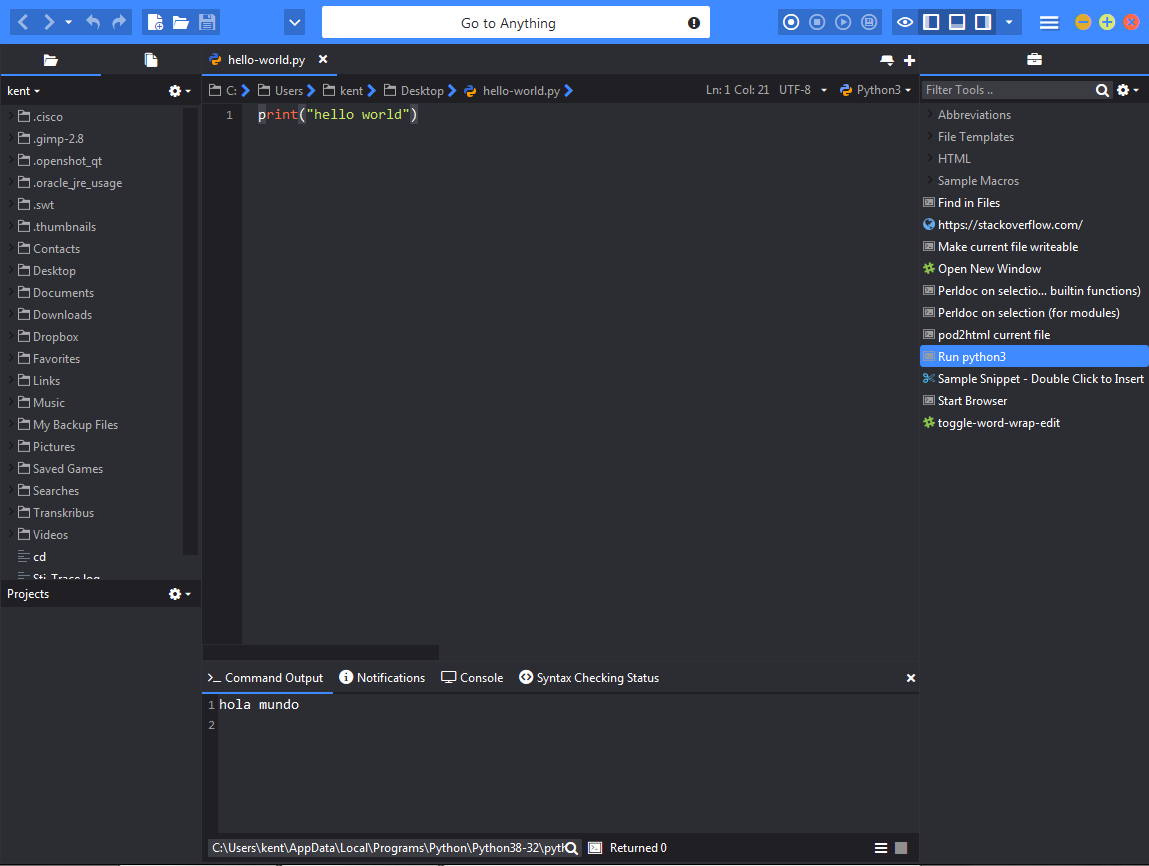
‘Hello World’
Interacting with a Python shell
Another way to interact with an interpreter is to use what is known as a shell. You can type in a statement and press the Enter key, and the shell will respond to your command. Using a shell is a great way to test statements to make sure that they do what you think they should.
You can run a Python Shell by double-clicking on the python.exe file. If
you installed version 3.8 (the most recent as of November 2019), then this
file is probably located in the C:\Users\YourUserName\AppData\Local\Programs\Python\Python38-32 directory. In
the shell window that opens on your screen type:
print('hello world')
and press Enter. The computer will respond with
hello world
When we want to represent an interaction with the shell, we will use -> to indicate the shell’s response to your command, as shown below:
print('hello world')
-> hello world
On your screen, it will look more like this:
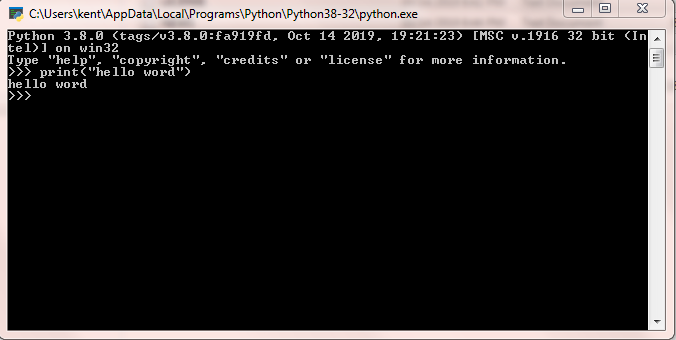
Python Shell in Windows
Now that you and your computer are up and running, we can move onto some more interesting tasks. If you are working through the Python lessons in order, we suggest you next try ‘Understanding Web Pages and HTML‘